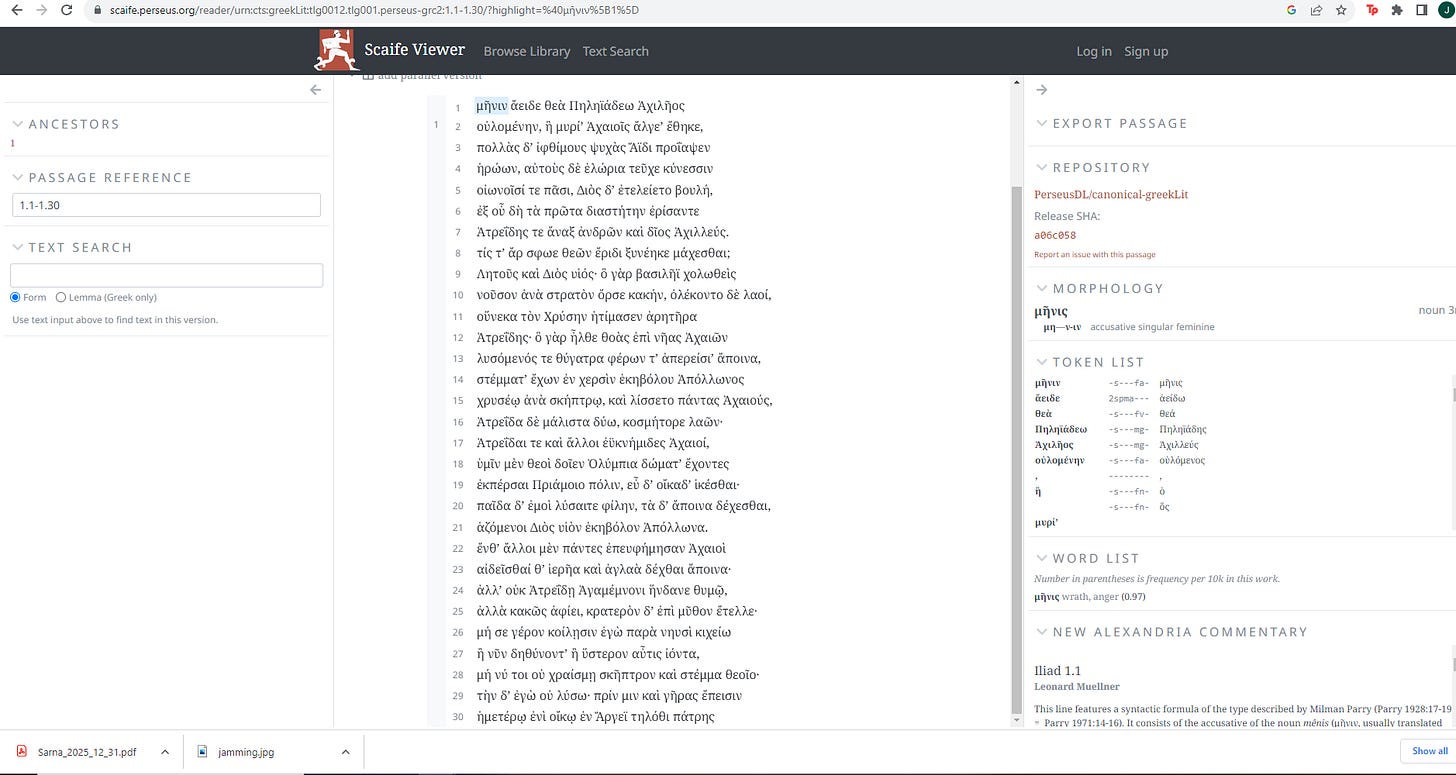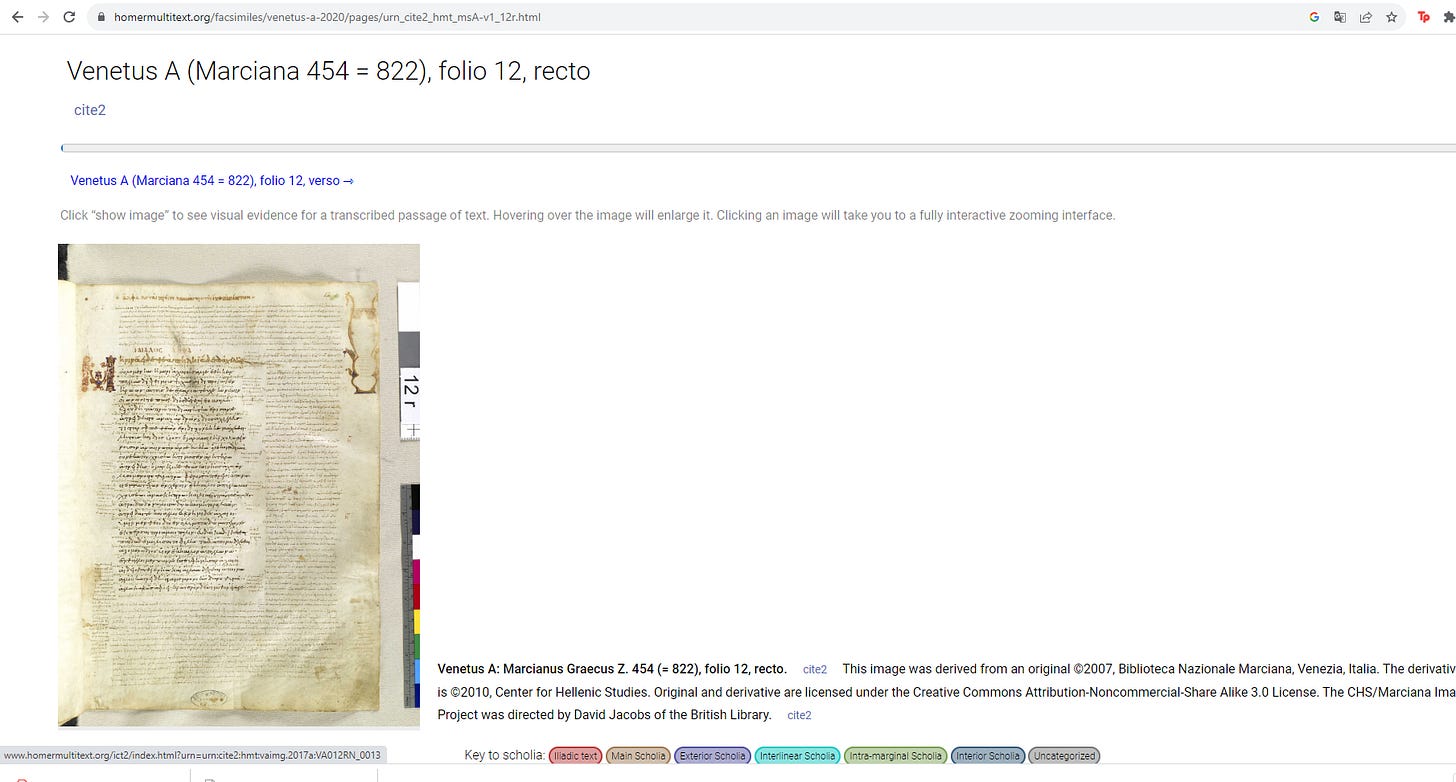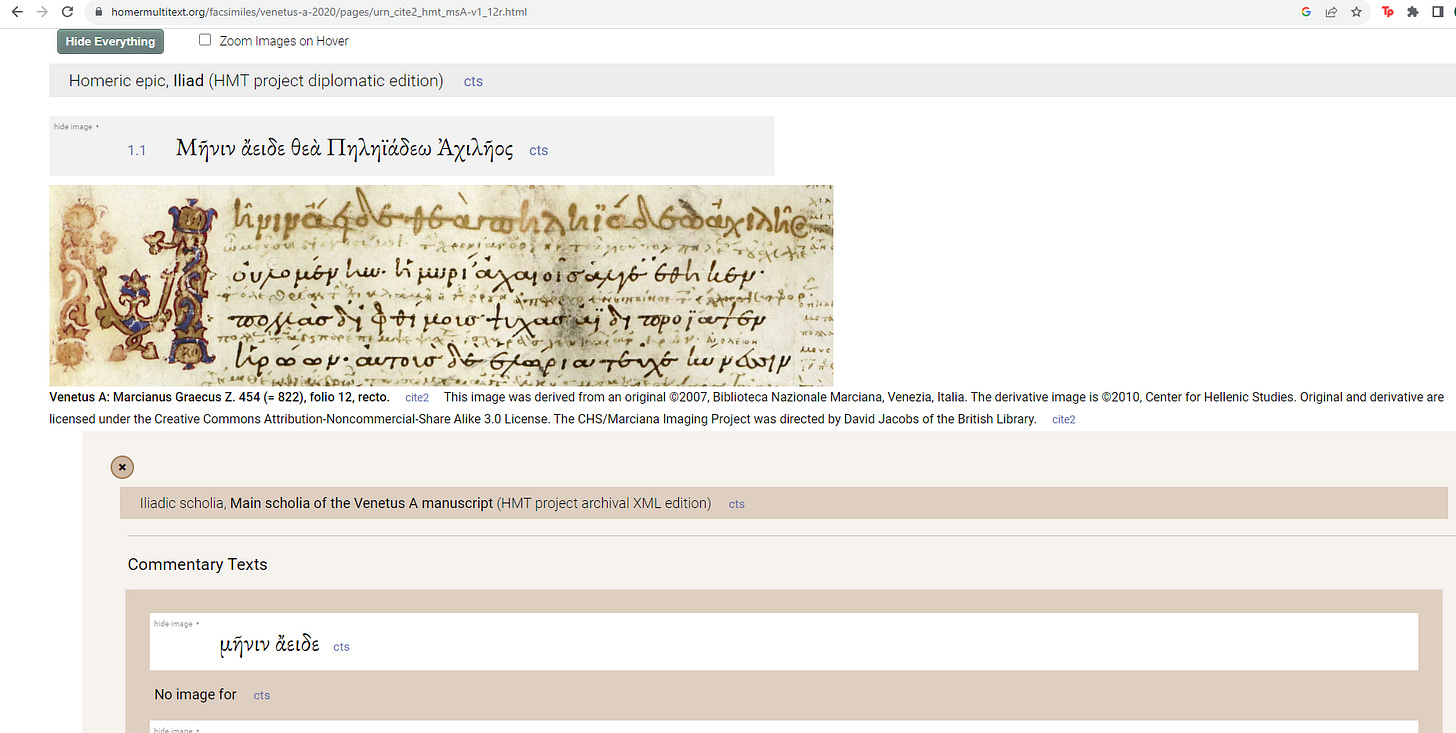Thanks to the publication of Emily Wilson’s translation of the Iliad (next week), the Iliad promises to be all the rage this year. I am teaching it in advanced Greek and also in translation this semester. I am also moving from a multi-year project on the Odyssey back to thinking about the Iliad on a regular basis.
As I have talked about elsewhere, translations of Homer are creations of their own, serving their audiences and contexts in important ways and sometimes standing as works of art on their own. The act of translation, however, in creating something new, does not fully represent the range of meaning or tones available in the original.
Even spending many years studying ancient Greek rarely provides us with the depth of understanding necessary to appreciate Homeric language and meaning. Studying Homer takes repetition and sustained reflection, alongside discussion with others. For those interested in learning a little more about the Homeric texts and trying to make some sense of them on their own, I have included some tools here.
The closest thing that Homeric poetry has to the useful intralinear parsing tools available for the bible, is the interface provided by the SCAIFE viewer. (The Scaife Viewer is the next-gen version of Perseus.org)
Because of the complexity of options available, the Scaife Viewer takes a little time to get used too. But it provides lexical, morphological, and commentary tools (with bibliography). Make sure to turn on the “highlight” function under TEXT mode nd the right hand column can provide definitions, parsing, and access to commentary on the word and line in particular.
Another tool that is probably the coolest thing on the internet (for a Homer-dork like me) is the Homer Multitext Project. This interface allows you to look at high-resolution images of some of our best medieval manuscripts of Homer.
The manuscripts are transcribed, so you can compare what appears in each on to what you find on Scaife elsewhere. But what is super cool is that the links to the side are keyed to the various levels of scholia (marginal comments, think footnotes from ancient scholars) all throughout the text.
This can give you access to transcriptions of the scholia throughout the manuscript. If you are ambitious, you can use the transcriptions and the images to teach yourself a little palaeography too.
Other web based tools:
A combination of the resources above and some others available online can help make anyone today the envy of Homerists only two generations ago. Here are a few more:
The Thesaurus Linguae Graecae, which keeps promising to be completely free some day, has been one of the most important tools in digital humanities since before the term was even coined. Its accessibility and paywall issues, however, have limited its impact outside of academic circles. In its full form it has all of extant Greek literature, but the major content-based limitation (as with other digital interfaces) is that the contents are based on specific editions of ancient texts without a sufficient apparatus criticus (the system of notes at the bottom of a critical edition that indicate manuscript variants and editorial choices). Like the Loeb and Perseus, this means TLG texts have the appearance of unity and authority, without actually possessing either.
On the TLG site you can access Cunliffe’s Lexicon of the Homeric Dialect.
Walter Leaf’s Commentary on the Iliad is available through Perseus. Three are downloadable versions through the HathiTrust.
For those who want to download tools to a computer or tablet, here are some of my favorites:
Homer’s Iliad edited by Monro and Allen (the OCT Text)
Helmut van Thiel’s edition of the D. Scholia: a clean and easy to read FREE pdf with far more of the D Scholia than are included in the TLG. Dindorff’s Scholia to the Iliad can also be downloaded
Benner’s Selections from Homer’s Iliad” a great introductory text with grammar and vocabulary
Cunliffe’s Lexicon of the Homeric Dialect









I have been using Beyond Translation for aid in translating the Odyssey. It has the Iliad as well as some other texts. It is an outgrowth of the Scaife Viewer. https://beyond-translation.perseus.org/